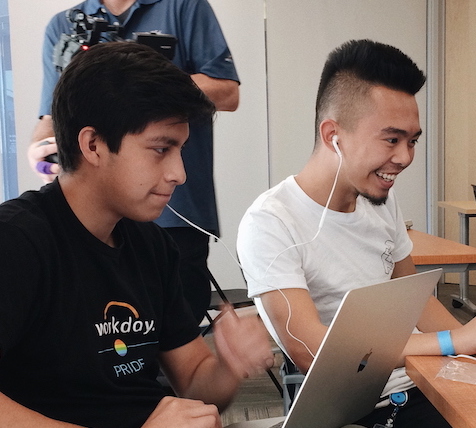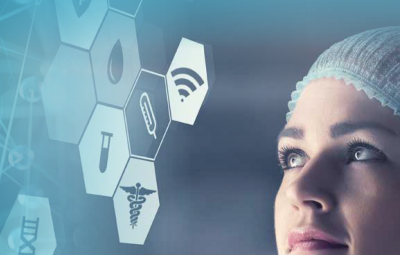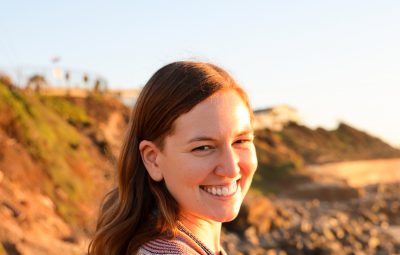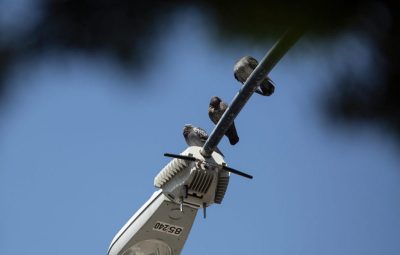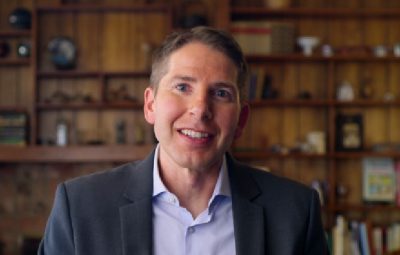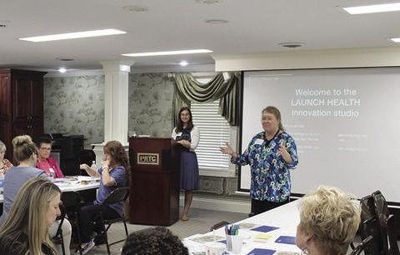Steven Rick, Ailie Fraser, and Elmer Barerra are graduate and undergraduate students of the Design Lab. They interned at Microsoft, Adobe, and Workday respectively working on research projects.
Steven Rick from Microsoft

(Left: Steven Rick hangs out with team from Microsoft research team)
Q: What is your affiliation with the Design Lab? How did what you learn coincide with what you learned at Microsoft?
“I’m a PhD student in the Department of Computer Science and Engineering and I am a graduate student member of the Design Lab, specifically contributing to research efforts on healthcare issues and healthcare design projects within the lab. My PhD work rose organically from opportunities presenting themselves in the health space and the UCSD healthcare system. That work is looking at many different angles with regard to how humans use data and how humans work together to accomplish tasks that involve patient care. My thesis has been evolving in the direction of human coordination and communication as it relates to medical care.”
Q: Why did you choose Microsoft?
“A mix of reasons. This is my second industry internship, last summer I worked with IBM Research in New York and when I was given the opportunity to experience a second industry research lab I was excited. The fact that the team I could join at Microsoft Research in Redmond would focus on healthcare was also a plus. Besides, Microsoft Research is always doing some really cool work, it’s really cutting edge stuff, and while Microsoft is a huge company the research teams are smaller and operate on a different vision. They don’t center themselves around product commercialization and the short term vision which that necessitates. They pursue worthwhile research with slightly longer timelines, remaining aware, of course, that the research might transfer to a product later if a commercial fit exists. Having found people inside Microsoft Research that were interested in healthcare applications, it just seemed like an excellent opportunity to meet and work together. Also, when I found out that my project would focus on empowering healthcare professionals to provide better interaction with their patient while still delivering quality care, I was hooked. That sort of research really strikes me as fundamentally important for the future of healthcare.”
Q: What did you do over the summer?
“I interned at Microsoft from June 19 to September 8 on the Clinical Sensing and Analytics team, which is a group doing a bunch of neat stuff pertaining to medical devices and medical data interaction. The first few weeks were about getting up to speed with everything at Microsoft and just deciding what my team would be pursuing. In those early weeks we noticed that a pivot might be necessary and my project team was able to shift our focus, changing directions and really accelerating rapidly. We’ve been building applications on top of Microsoft’s Cognitive Services platform, which is some cutting edge artificial intelligence and machine learning pipelines for understanding anything from emotion to speech and gestures. We’ve been using that to create a system that can be deployed into clinical environments. Now nearing the end of the internship, it’s nice to see that we’ve managed to build an MVP system that’s up and running in clinic.”
Q: What do you like about Microsoft?
“The people. What’s been really awesome is the people and how they all embrace work-life balance. From the team outings during work to the get togethers outside, we have a lot of fun hiking, biking, and more. The people I work with really embrace living and working here in the Seattle-Redmond area. They truly make the experience worthwhile. I also really like my team. My personal project consisted of a team of four—three full time researchers and myself, and they’ve been great mentors and colleagues. Being part of the larger Clinical Sensing and Analytics team is wonderful too, as I have access to a wider range of experiences and expertise and everyone there is super helpful and friendly, making it a really positive and energetic environment.”
Q: What are the biggest lessons you learned at Microsoft?
“Fundamentally, from a career perspective the biggest thing I’ve learned is how do you think about, design, and ultimately deliver a product that is shippable and that is thought through enough that when you give it to someone else, you know it’s not going to break. It’s about how you understand the whole product and service, acknowledging that the people who will use it will rely on it and will expect robustness and fault tolerance. Learning the engineering insights and cultivating that design insight has been incredibly helpful. From a personal perspective, I’ve learned even more about what a good work-life balance consists of. You need to genuinely invest in not just yourself, but also your community, your friends, and your coworkers. Seeing and living that firsthand has been an incredible lesson for me.”
Ailie Fraser from Adobe

(Right: Ailie Fraser accepts Adobe Fellowship Award from CEO, Shantanu Narayen)
Q: What is your affiliation with the Design Lab?
“I’m a PhD student working in the Design Lab on research in human-computer interaction and I am advised by Scott Klemmer. My work is focused on helping people do creative work and improving software to better support the creative process.”
Q: Why did you choose Adobe? What is your title?
“I’m an intern with the Creative Intelligence Lab. This is my second internship with Adobe. I interned with Adobe two summers ago and had a great supervisor, Mira Dontcheva. We have continued to collaborate since then, and I am working with her again this summer. This summer internship was also part of my Adobe Research Fellowship Award, for which I am very grateful to Adobe. As part of the fellowship, I had the chance to fly to San Jose for the award ceremony and spend a day at Adobe’s headquarters. There I met Adobe’s executives, including Gavin Miller, the head of Adobe Research, and Shantanu Narayen, the CEO.”
Q: What did you do over the summer?
I am working on a research project focused on exploring ways to inspire people while they work in creative software.
Q: What do you like about Adobe?
“I think Adobe does a lot of really cool research, and has a very talented group of researchers. They seem to have a lot of freedom to choose what they work on, and at the same time are also really interested in improving Adobe’s products. Adobe also has a great atmosphere for work-life balance which I really appreciate.”
Q: What are the biggest lessons you learned at Adobe?
“Share your ideas with others early and often. I found that talking to other researchers and interns about my project both in and out of meetings helped me get some really great feedback. I’ll definitely continue doing that and will try to have more spontaneous conversations with people in the Design Lab.”
Elmer Barerra from Workday
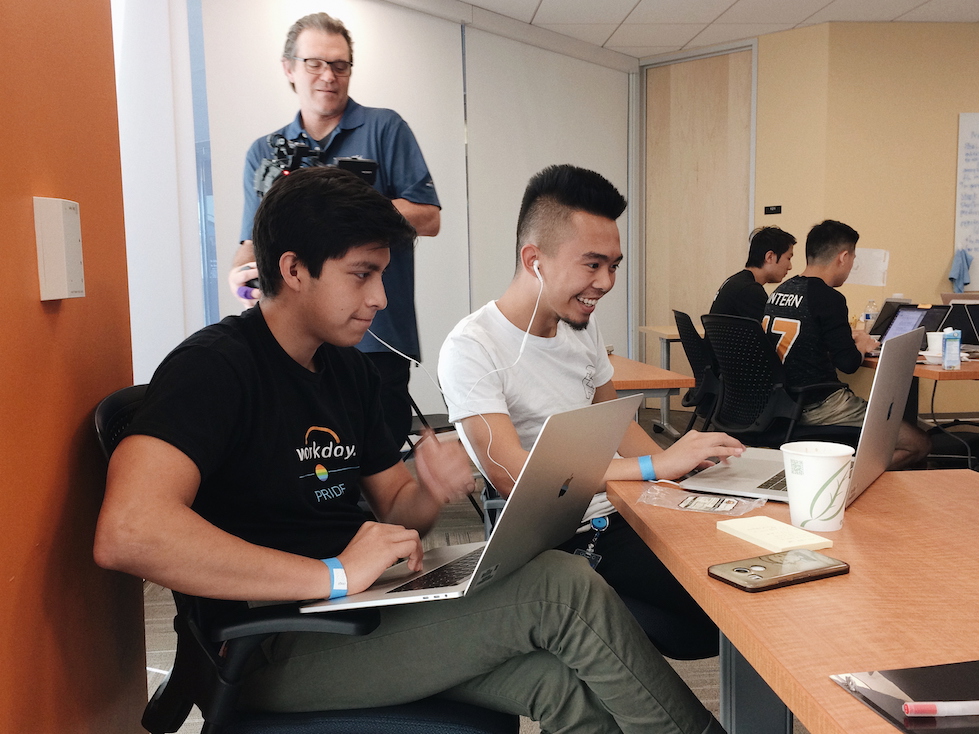
(Left: Elmer Barerra hard at work with Workday design team)
Q: What is your affiliation with the design lab?
I’ve been collaborating with Design Lab for a while – both as a student in the lab and as board member for Design at UCSD, an undergraduate design organization. Last summer, I was a part of the team that worked on the Matchmaker with SAP – a platform that seeks to bring industry-derived problems to project based classes.
Q: Why did you choose Workday? What is your title?
I am a Product Design Intern at Workday. I wanted to understand the role User Experience takes in defining a product, how to work with various stakeholders, and how to communicate ideas effectively. I saw Workday’s design team as a good place to build on these goals.
Q: What did you do over the summer?
Workday is a leading provider in enterprise HR and Finance software. I worked with the Payroll, Time Tracking, and Absence design team to identify ways of improving the absence feature for Workday on mobile. The project spanned the entire UX cycle from research to prototyping and testing a concept.
Q: What do you like about Workday?
I really enjoyed how open and welcoming the people were at Workday. If I stumbled on something, there were always designers that we’re glad to help out. Little things like talks on random topics, recurring 1 on 1 meetings, or just hanging out after work made the team feel comforting.
Q: What are the biggest lessons you learned at Workday?
Ask questions often and early. At first I felt a bit overwhelmed – this was my first real job in a corporate environment, there was a lot of material to be on-boarded on, and I had trouble understanding the problem we were designing for. However, something I’ve taken from UCSD Design Lab is to always ask why. At Workday, that meant that whenever I felt lost, I should feel comfortable finding the right people and the right questions to ask.
